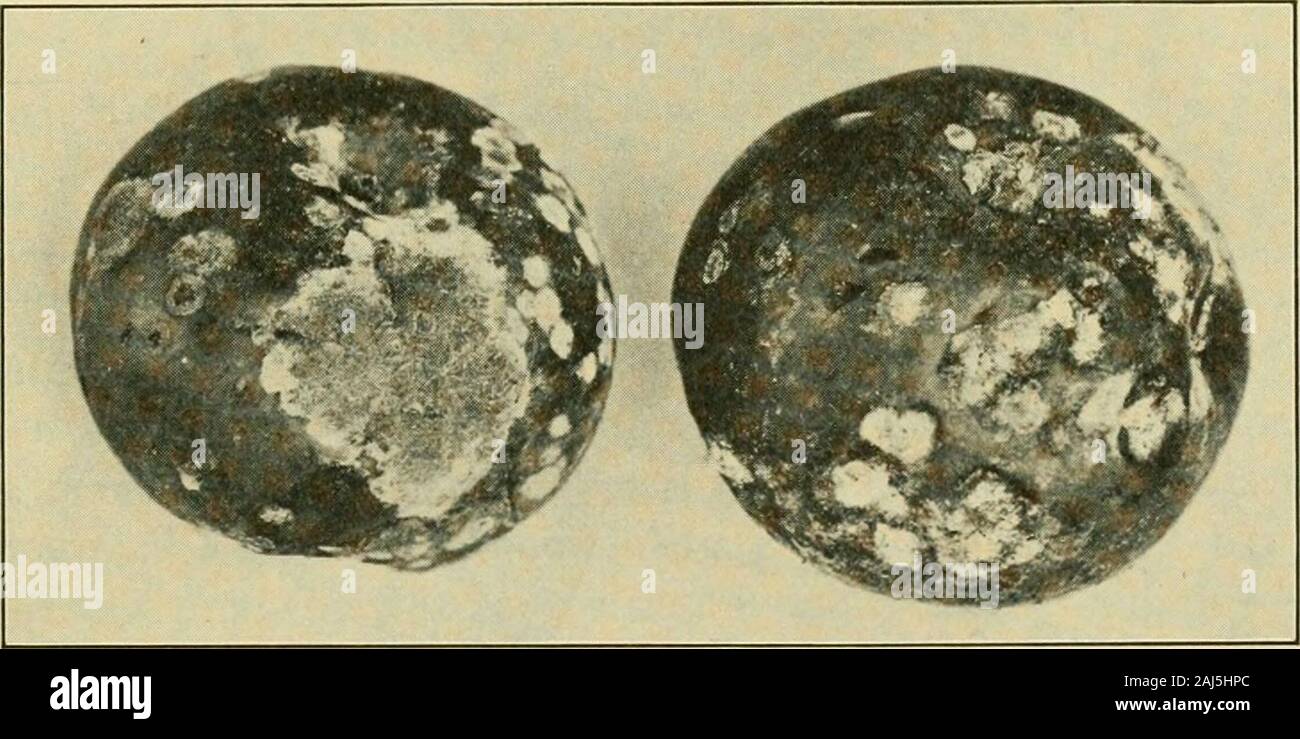Fungous diseases of plants . Fig. 129. Sporotrichum PoAi: Cunidioph(jresAND Conidia FUNGI IMPERFKCTI 295 therefore concerns itself primarily with a maintenance of condi-tions as dry and cool as is compatible with satisfactory growth,and also with matters of general sanitation, such as proper ven-tilation, destruction of diseased parts, and all defective specimens,leaves, and other refuse. Affected buds should also be pickedoff and burned. Susceptible varieties should not be grown wherethe disease prevails. VI. A riNK ROT FOLLOWINC; APPLE SCABCcphalotlicciiDJi roscnin Cda. Craig, John, and Van

Image details
Contributor:
The Reading Room / Alamy Stock PhotoImage ID:
2AJ5HPCFile size:
7.1 MB (376.7 KB Compressed download)Releases:
Model - no | Property - noDo I need a release?Dimensions:
2237 x 1117 px | 37.9 x 18.9 cm | 14.9 x 7.4 inches | 150dpiMore information:
This image is a public domain image, which means either that copyright has expired in the image or the copyright holder has waived their copyright. Alamy charges you a fee for access to the high resolution copy of the image.
This image could have imperfections as it’s either historical or reportage.
Fungous diseases of plants . Fig. 129. Sporotrichum PoAi: Cunidioph(jresAND Conidia FUNGI IMPERFKCTI 295 therefore concerns itself primarily with a maintenance of condi-tions as dry and cool as is compatible with satisfactory growth, and also with matters of general sanitation, such as proper ven-tilation, destruction of diseased parts, and all defective specimens, leaves, and other refuse. Affected buds should also be pickedoff and burned. Susceptible varieties should not be grown wherethe disease prevails. VI. A riNK ROT FOLLOWINC; APPLE SCABCcphalotlicciiDJi roscnin Cda. Craig, John, and Van Hook, J. M. Pink Rot. An Attendant of Apple Scab. Cornell Univ. Agl. Exp. Sta. Built. 207: 199-210. fii^s. J6-40. 1907.Eustace, H.J. A Destructive Apple Rot Following Scab. N. Y. Agl. Exp. Sta. Built. 227 : 367-389. pis. i-S. 1902.. Fu;. 130. Pink Mold following Apple Scab. (Photograph by John Craig) During several seasons, particularly the autumn of 1902, applescab was very prevalent in western New York, favored by a moist, muggy season. The scab was followed in the autumn by the devel-opment of a mold upon the scab spots (Fig. 130), which was atfirst white, becoming pink with a production of abundant spores.The fungus was identified as above, and proved to be common inmany orchards of the state. It is a widely distributed saprophyte, which can be expected perhaps to cause widespread injury onlywhen conditions are unusally favorable for its development. Thegreatest damage is done after harvesting, and the Rhode IslandGreening has proved to be the variety most susceptible to its attack. 296 FUNGOUS DISEASES OF PLANTS ^ Inoculation experiments have also indicated that this fungus mayproduce a rot through wound infections on apple, pear, quince, andgrape. It is believed that the fungus will become injurious onlyunder